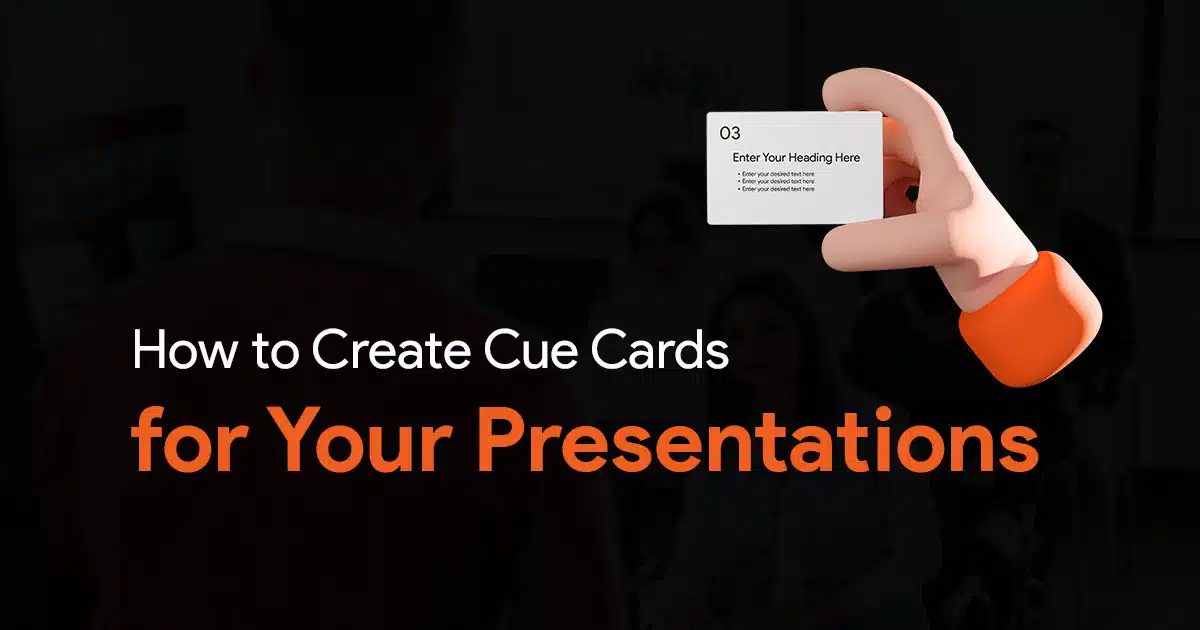How to Create Cue Cards for Your Presentations

I’m sure you’ve experienced this before. Butterflies in your stomach, palms clammy, knees weak, arms are heavy. On the surface you might look calm and ready to nail that presentation. But you keep on forgetting the content in your slides. I mean, you did spend a ton of time working on them. How could you forget these slides? These things happen. To prevent this from happening again, you need to learn how to create cue cards for your presentations.
Watch this quick video to learn everything about creating cue cards for your presentations:
Cue cards can be the unsung heroes of your next presentation, and they can help you deliver a smooth confident presentation. No, cue cards are not just for forgetful stand-up comedians. Here’s how you can use cue cards to remember your presentation material better:
Creating Your Cards:
When creating cue cards, ditch the full script. During the presentation, if you’re going to look at a card full of sentences, you’re just going to be more confused. Instead, just jot down key points and reminders. Think of them as cheat sheets for your memory, not complete manuscripts.
Don’t even write full sentences. Write single words or short phrases that trigger your memory. In a presentation about global warming, just noting down “Greta” should be enough for you to talk about her work.
Choose a card size that is comfortable. Write clearly in large, easy to read handwriting. You can even use different colors for different sections, or use highlighters.
Never write on both sides of your cue cards. You will end up fumbling on stage, and continously turning your cards over looking for the information you need.
Also, remember to always number your cards to maintain the right order. This will prevent frantic shuffling and panicked mid-presentation searches.
Cue Card Confidence:
You should practice reading your cue cards before your presentation. My advice is to find a comfortable way to hold them. Stand in front of a mirror, and practice using them. Get comfortable with the flow, and iron out any awkward moments before the big day.
Remember that cue cards are more of a safety net, not a script. You should not be staring at them all the time. Use them subtly, glance down quickly, and most importantly, maintain eye contact with your audience.
With your cue cards by your side, feel free to improvise. Even if you go off-script, you can always rely on your cue cards to bring you back on track.
Conclusion
Cue cards may seem like a simple tool, but they can be your secret weapon for delivering polished engaged presentations. Remember to rehearse well before using them, who knows, maybe you won’t have to use them during your presentation. So get your cue cards ready and have an amazing presentation!


